Sungsoo Park
Towards Diverse and Effective Question-Answer Pair Generation from Children Storybooks
Jun 11, 2023Abstract:Recent advances in QA pair generation (QAG) have raised interest in applying this technique to the educational field. However, the diversity of QA types remains a challenge despite its contributions to comprehensive learning and assessment of children. In this paper, we propose a QAG framework that enhances QA type diversity by producing different interrogative sentences and implicit/explicit answers. Our framework comprises a QFS-based answer generator, an iterative QA generator, and a relevancy-aware ranker. The two generators aim to expand the number of candidates while covering various types. The ranker trained on the in-context negative samples clarifies the top-N outputs based on the ranking score. Extensive evaluations and detailed analyses demonstrate that our approach outperforms previous state-of-the-art results by significant margins, achieving improved diversity and quality. Our task-oriented processes are consistent with real-world demand, which highlights our system's high applicability.
Solving Bilevel Knapsack Problem using Graph Neural Networks
Nov 24, 2022Abstract:The Bilevel Optimization Problem is a hierarchical optimization problem with two agents, a leader and a follower. The leader make their own decisions first, and the followers make the best choices accordingly. The leader knows the information of the followers, and the goal of the problem is to find the optimal solution by considering the reactions of the followers from the leader's point of view. For the Bilevel Optimization Problem, there are no general and efficient algorithms or commercial solvers to get an optimal solution, and it is very difficult to get a good solution even for a simple problem. In this paper, we propose a deep learning approach using Graph Neural Networks to solve the bilevel knapsack problem. We train the model to predict the leader's solution and use it to transform the hierarchical optimization problem into a single-level optimization problem to get the solution. Our model found the feasible solution that was about 500 times faster than the exact algorithm with $1.7\%$ optimal gap. Also, our model performed well on problems of different size from the size it was trained on.
Controlled Molecule Generator for Optimizing Multiple Chemical Properties
Oct 26, 2020
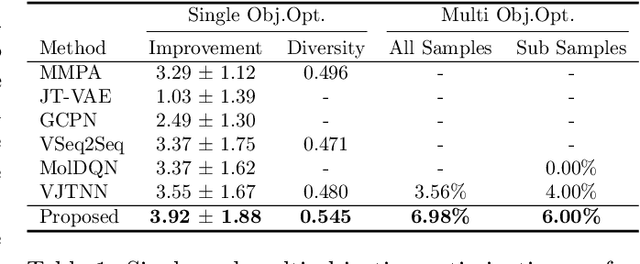
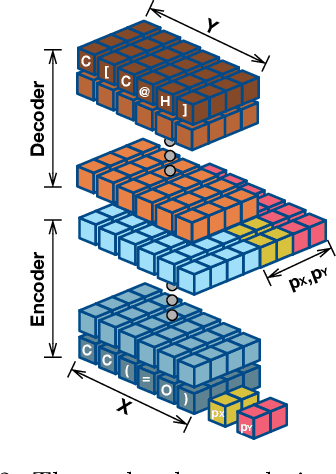
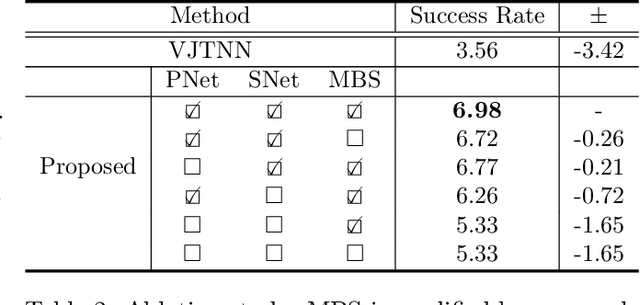
Abstract:Generating a novel and optimized molecule with desired chemical properties is an essential part of the drug discovery process. Failure to meet one of the required properties can frequently lead to failure in a clinical test which is costly. In addition, optimizing these multiple properties is a challenging task because the optimization of one property is prone to changing other properties. In this paper, we pose this multi-property optimization problem as a sequence translation process and propose a new optimized molecule generator model based on the Transformer with two constraint networks: property prediction and similarity prediction. We further improve the model by incorporating score predictions from these constraint networks in a modified beam search algorithm. The experiments demonstrate that our proposed model outperforms state-of-the-art models by a significant margin for optimizing multiple properties simultaneously.
Self-Attention Based Molecule Representation for Predicting Drug-Target Interaction
Aug 15, 2019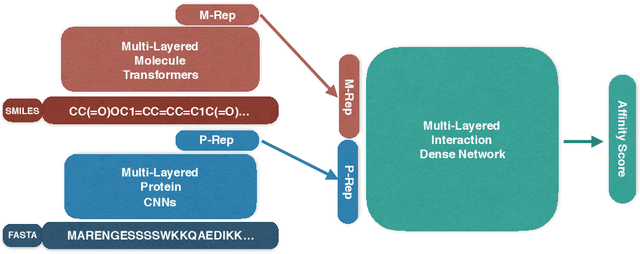

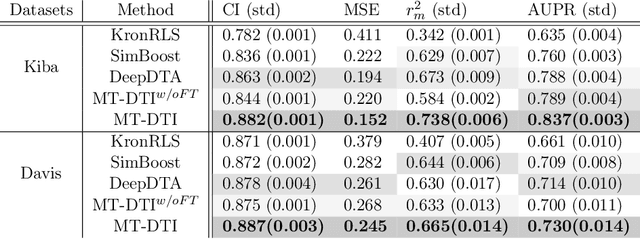
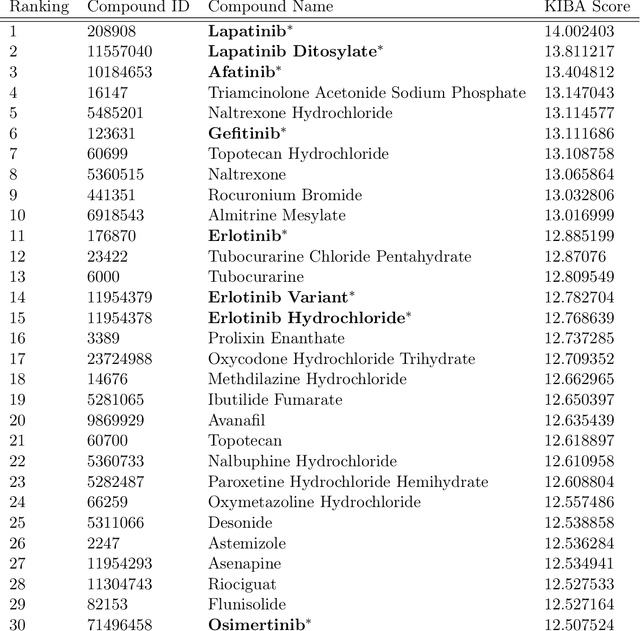
Abstract:Predicting drug-target interactions (DTI) is an essential part of the drug discovery process, which is an expensive process in terms of time and cost. Therefore, reducing DTI cost could lead to reduced healthcare costs for a patient. In addition, a precisely learned molecule representation in a DTI model could contribute to developing personalized medicine, which will help many patient cohorts. In this paper, we propose a new molecule representation based on the self-attention mechanism, and a new DTI model using our molecule representation. The experiments show that our DTI model outperforms the state of the art by up to 4.9% points in terms of area under the precision-recall curve. Moreover, a study using the DrugBank database proves that our model effectively lists all known drugs targeting a specific cancer biomarker in the top-30 candidate list.
 Add to Chrome
Add to Chrome Add to Firefox
Add to Firefox Add to Edge
Add to Edge